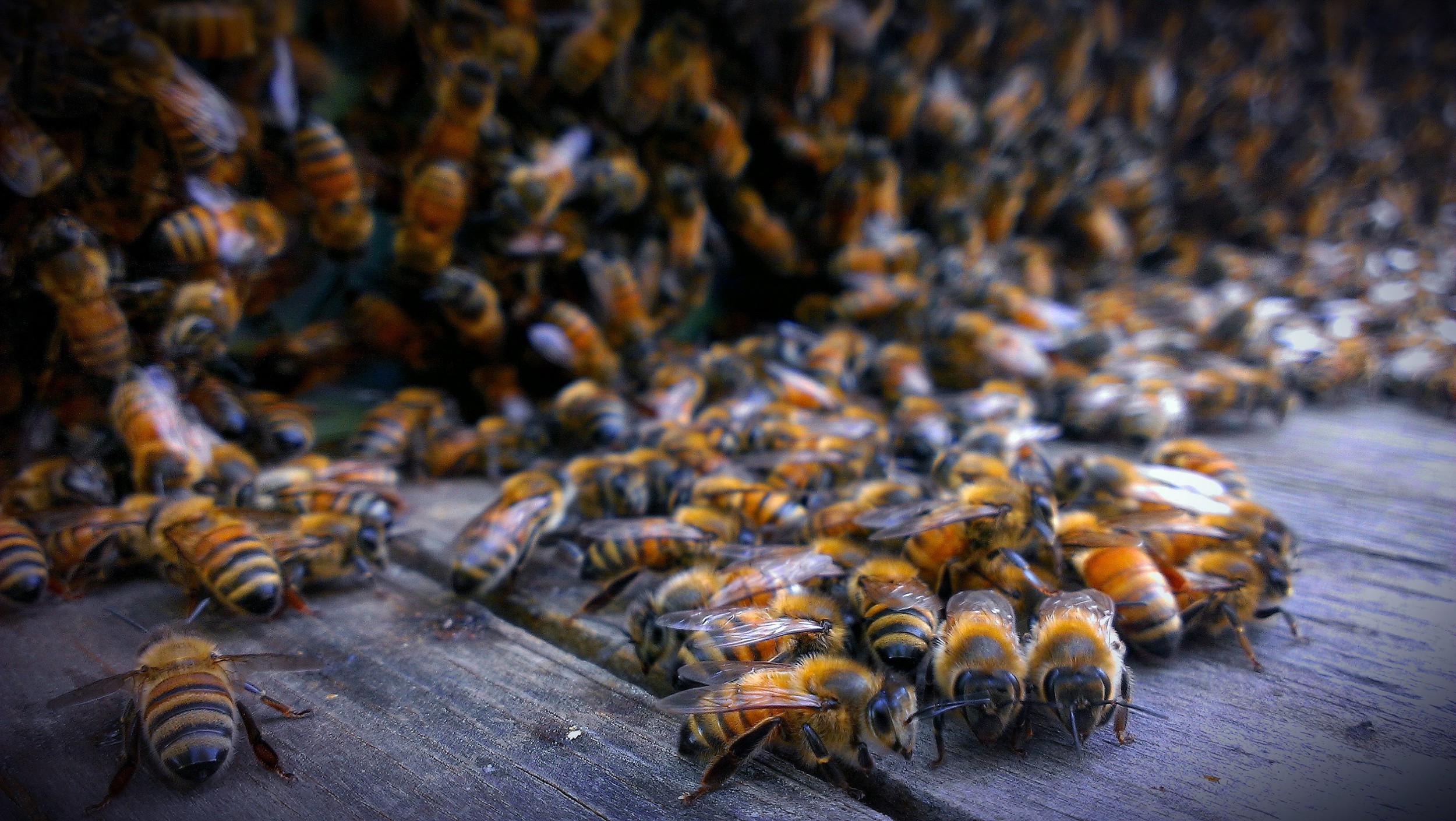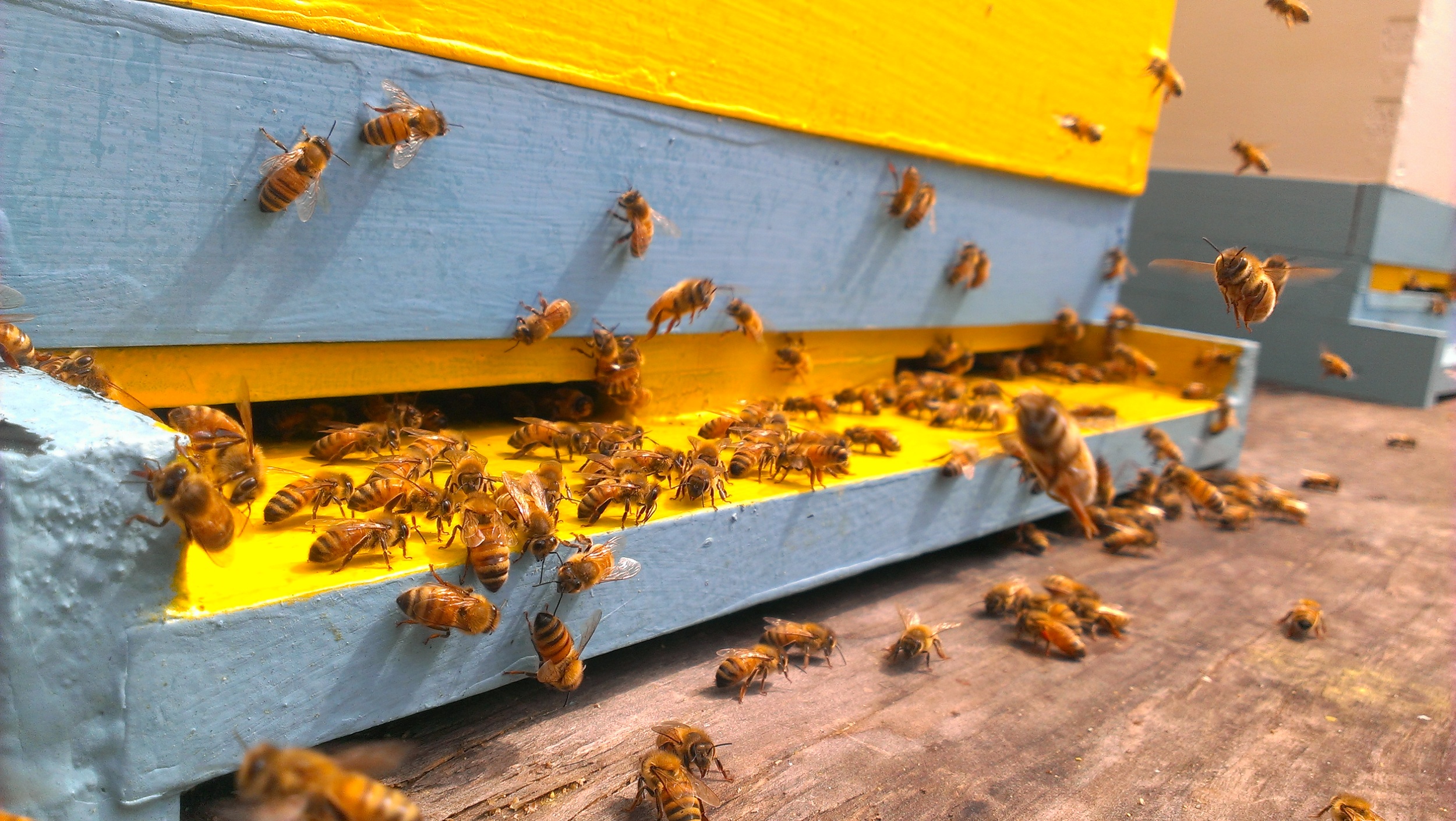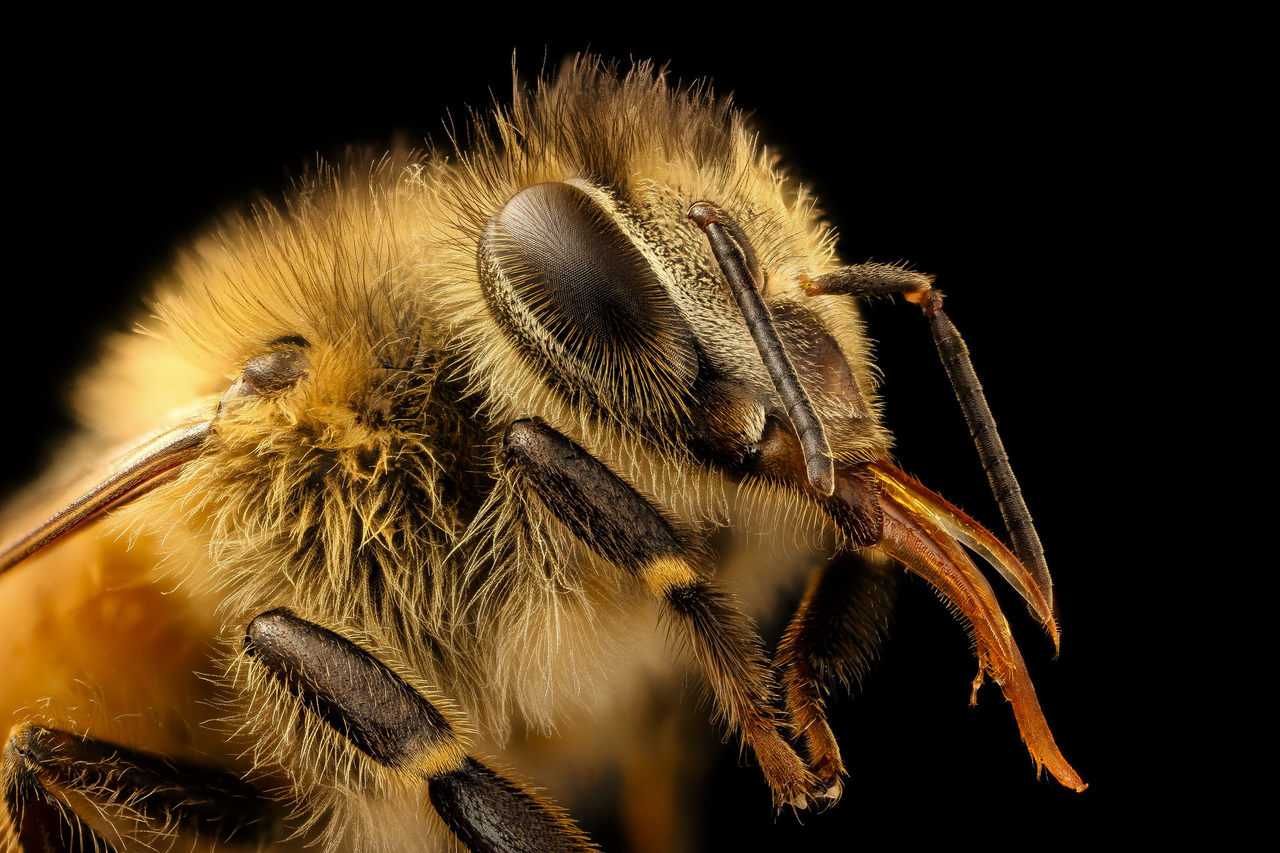- Honey Bees -
Honey bees, identifiable by their furry, black and gold bodies and pollen-laden hind legs, inhabit diverse locations from tree cavities to man-made structures. Their activity peaks in spring and summer afternoons. Colonies, ranging from 3,000 to 80,000 bees, consist of worker bees, drones, and a queen, all contributing to intricate beeswax combs used for honey, pollen, and housing young. Though generally docile, some hives may carry aggressive genes. Honey bees are crucial pollinators, responsible for a third of our food and 80% of flowering plants, underscoring the importance of their protection.
Four Removal Types Available
-
Four Removal Types Available -
Swarm Removal
A honey bee swarm is an exposed cluster of bees or a large cloud in the air following their queen to a new home. Honey bee swarms signify the birth of a new colony, requiring 3-5,000 bees and a queen. If you see a few bees investigating a cavity, these are likely scouts, and a larger swarm may follow if the access isn't sealed immediately. If you find a large cluster of exposed bees, they will likely move on, but relocation is highly recommended to avoid expensive structural removal if they nest in a cavity.
Fee:
Swarm collection $145 and up depending on difficulty, plus drive time. Most swarm removals fall under the $145 base price. We collect the bees using a custom modified vacuum device and relocate the swarm into a new home with our local partnered apiaries. Approximate removal time required is 45-60min.
Sealing of areas of interest by scout bees $125 and up depending on difficulty, plus materials, plus drive time.
Click the box below to book your removal or ask a question!
Structural Removal
This type of removal is typical for honey bees that construct a nest inside an interior wall or ceiling of your home. Our process begins by carefully opening the drywall to access and relocate the bees. We then meticulously clean out any comb before expertly rebuilding your wall. Typically, newly formed hives require approximately 3-5 hours for removal, while longer established hives may take 8-10 hours. The wall rebuilding process is usually completed within 1-3 hours.
Fee:
$775 and up depending on access, difficulty, bee tent installation needed, for newly formed hives (Booking and removal performed within 10 days of entry)
$1500 and up depending on access, difficulty, bee tent installation needed, for established hives (Longer than 10 days after entry).
Optional rebuild, wall patch and texture offered. Estimate for repair is normally between $200-500 plus materials (normally between $50-75) depending on size and difficulty of the patch.
We carry general liability insurance and the removal is backed by a 3 year guarantee that the bees will not re-enter the same cavity or they will be removed again for free.
Click the box below to book your removal or ask a question!
Tree Removal
We specialize in relocating bees alive, not killing them. We utilize a unique extended-release method that ensures the bees are removed without causing damage to the tree. This process generally takes 3-4 weeks to complete. Once the removal is finished, we install a metal wire screen patch over the original hive entrance, coated with tar to encapsulate the hive. This comes with a one-year "no bee" guarantee. To maintain an extended warranty, we recommend scheduling inspections of the patch as trees can grow and create gaps over time. Each visit for setup and pickup takes approximately 45 minutes to 1.5 hours, depending on access, and two visits are typically required.
Fee:
Our service for bee removal from trees starts at $525, with the final cost dependent on the difficulty and accessibility of the hive. This price includes materials (typically $25-$50) and drive time.
Click the box below to book your removal or ask a question!
Chimney Removals
Beehive chimney removals involve safely extracting honey bee colonies that have established themselves within a chimney structure. It is typical to start the removal at the top of the chimney and work down to the flue, as swarms typically build from the top down. Scaffolding or boom lifts are normally required for difficult-to-access chimneys. If bees are entering at or near the sides of the chimney, the removal will likely be done through an interior wall or siding of the structure.
Fee:
Depending on the ease of access and difficulty
A hive smaller than 1 cubic foot (ex: basketball) is estimated $675-1,800 labor, plus materials (estimated $50-$75), equipment rental if required and drive time ($1 per minute).
A hive larger than 1 cubic foot (ex: basketball) is estimated $1,800-$3,000 labor, plus materials (estimated $75-$125), equipment rental if required and drive time ($1 per minute).
This includes: Removal and relocation of the honey bee hive, cavity clean out, special primer/sealer painting to eliminate pheromones left in the cavity by bees (if applicable), and sealing the original entrance (if applicable).




